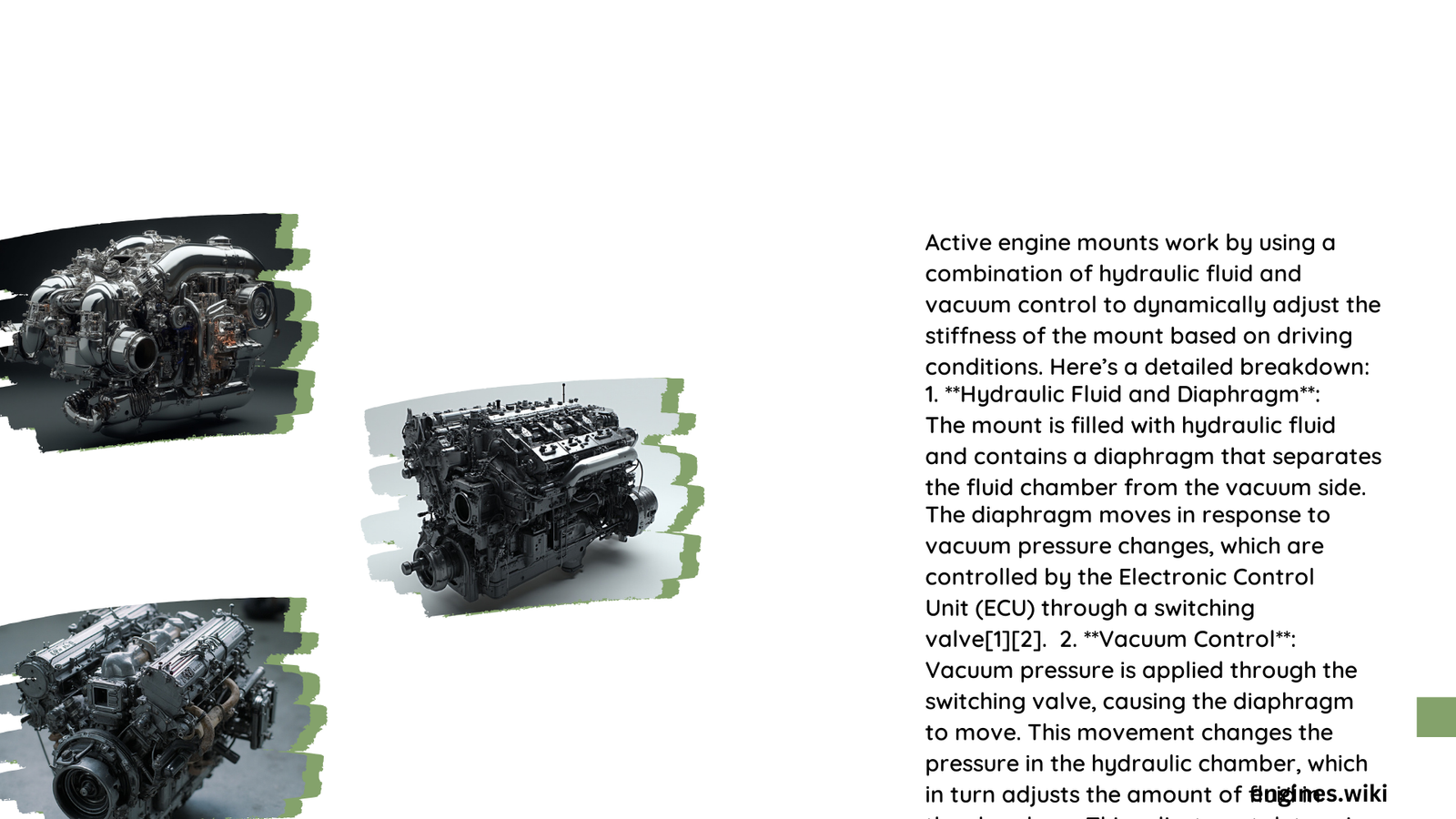Active engine mounts represent a sophisticated technological solution designed to minimize engine vibrations and enhance vehicle performance. These advanced mounting systems utilize complex hydraulic and electronic mechanisms to dynamically absorb and neutralize mechanical oscillations, providing superior comfort and reducing mechanical stress on automotive components.
What Are Active Engine Mounts?
Active engine mounts are sophisticated mechanical interfaces between an engine and vehicle chassis that dynamically adapt to reduce vibrations. Unlike traditional passive mounts, these systems use real-time electronic feedback and hydraulic mechanisms to counteract engine-generated oscillations.
How Do Sensors Detect Engine Vibrations?
| Sensor Type | Detection Mechanism | Response Time |
|---|---|---|
| Acceleration Sensors | Measure engine excitations | Milliseconds |
| Strain Gauges | Detect mechanical stress | Microseconds |
| Piezoelectric Sensors | Capture dynamic loads | Nanoseconds |
What Components Make Active Engine Mounts Functional?
Key components of active engine mounts include:
- Hydraulic Chambers: Fluid-filled compartments that absorb mechanical energy
- Electronic Control Unit (ECU): Processes sensor data and generates compensation signals
- Actuators: Mechanical devices that generate counteracting movements
- Acceleration Sensors: Detect and measure engine vibrations
What Principles Govern Vibration Control?

Active engine mounts operate through sophisticated control algorithms that:
- Detect Vibration Frequencies
- Analyze incoming mechanical oscillations
-
Identify specific vibrational characteristics
-
Calculate Compensation Movements
- Generate inverse phase signals
-
Neutralize unwanted mechanical energy
-
Implement Real-Time Adjustments
- Modify hydraulic fluid pressure
- Adjust mount stiffness instantaneously
What Performance Benefits Emerge?
Performance advantages of active engine mounts include:
- Reduced Cabin Noise: Up to 90% vibration reduction
- Enhanced Driving Comfort: Smoother vehicle operation
- Extended Component Lifespan: Minimized mechanical stress
- Improved Vehicle Handling: Better overall stability
What Challenges Exist in Implementation?
Potential limitations include:
- Higher manufacturing costs
- Complex maintenance requirements
- Potential electronic system failures
- Temperature sensitivity
What Future Developments Are Anticipated?
Emerging trends in active engine mount technology suggest:
- Integration with advanced driver assistance systems
- More sophisticated adaptive control algorithms
- Enhanced materials with superior damping properties
- Increased use of artificial intelligence for predictive maintenance
Technical Specifications
Typical Performance Parameters:
– Vibration Reduction: 70-90%
– Response Time: 2-5 milliseconds
– Operating Temperature Range: -40°C to 120°C
– Typical Lifespan: 100,000-150,000 miles
Conclusion
Active engine mounts represent a critical advancement in automotive engineering, offering unprecedented vibration control and performance optimization. As technology continues evolving, these systems will likely become increasingly sophisticated and integral to vehicle design.
